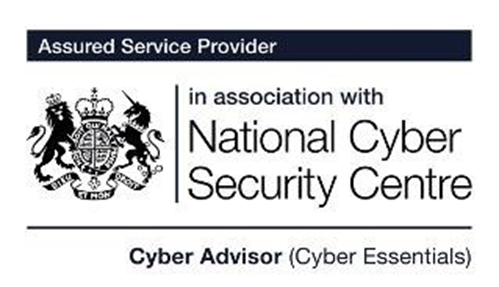
An unauthorised network incursion can stop a business in its tracks. No matter how big of an organisation you might have, it’s still a target for malicious attacks. Companies of all sizes continue to focus heavily on network security to combat the ever-growing threats to their systems, software, and data.
Businesses should be aware of the many network security threats they face. This sentiment is especially true for small to medium-sized businesses (SMBs), as hackers consider them low-hanging fruit. SMBs tend not to prioritise network security compliance, making them more exploitable to cyberattacks.
We’ll discuss the top 10 network security threats and their potential solutions to protect your business from being compromised.
Network Security: Ransomware
Ransomware is a vicious malware that infects computers and mobile devices, locking users out of their devices or restricting access to files until a sum of money has been paid. The “ransom” often comes with accompanying threats of data destruction. This particular malware is considered the go-to method of attack for cybercriminals and has reached epidemic proportions worldwide.
Businesses continue to fall victim to ransomware attacks. Ransomware has seen exponential growth in recent years and is expected to cause the world £9.3 trillion by 2025. In 2022 alone, it has been estimated that, on average, a cyberattack will cost close to £19.5 million. The total for the year looks to reach £17.7 billion in damage costs to businesses around the globe.
A normal ransomware attack starts by infecting a database system, blanket encrypting the data, and then demanding payment with threats of deletion. However, as technology evolves, so too does ransomware. It is now able to take advantage of multiple routes to achieve infection.
Under no circumstances should a business pay the ransom fee. This would only encourage more cyberattacks against your business. Instead, link up with your IT team or a cyber security services company to find out what to do next. A cyber security consultancy service can help your business if it’s unable to retain an in-house IT team.
If you suspect a ransomware attack or notice your computer begins to slow down without cause, shut it down immediately. Disconnect the ethernet cable from the back and reboot your system. Once the reboot is complete, check to see if your system has been compromised. Have IT install a network security scanning product to run a full scan of your data as a preventative measure before going back to work.
Computer Viruses and Worms
Over 50% of all computer malware infections are viruses. Viruses attach themselves to a system or host file, awaiting to be inadvertently activated by a timer or event. Worms prefer to infect documents, spreadsheets, and other files, sometimes by utilising macros.
Once a virus or worm enters your computer or device, it replicates itself, infecting your computer and as many connected systems as possible. Viruses and worms will often transmit via exploitation of vulnerabilities in your software. As soon as they gain entry, they spread rapidly, affecting as many networked systems as possible.
Combating the threat of infection will require the installation of anti-malware on all connected systems. Doing so should reduce the possibility of infection and prevent them from spreading throughout your network.
Another solution is to be preemptive in your defence. Please take all necessary precautions to contain the threats before they can wreak havoc on your devices and systems. One way to do this is to use a personal firewall to block external access to connected network services. This will, at the very least, help slow down the attacker’s advances giving you enough time to counterstrike.
Rootkits
Rootkits are masters of stealth. They are a dangerous type of malware that allows hackers to access your computer. A hacker can place a rootkit on your computer and leave it hidden in your network. They will then assume control of your computer and use it for whatever they wish.
Hackers do this remotely and perform malicious attacks such as password theft, key-logging, and antivirus disabling, among other things. Sadly, no software is yet available that can detect and remove all rootkits. Instead, you’ll need to do a little detective work.
Some behavioural software options can detect a rootkit or backdoor. The issue is that they can often be quite expensive. Not only that, there is no guarantee it can remove the rootkit once found. The best way to combat a rootkit is to be vigilant and consistent with your network’s scheduled updates and patches.
Phishing Attacks
Phishing attacks are socially engineered threats designed to extract sensitive data from the target. An attacker lures its victim through instant messages or phishing emails by impersonating a reputable source such as a website, banking institution, or personal contact. These emails or messages will appear legitimate, tricking recipients into providing their financial details like passwords, usernames, credit card numbers, and other sensitive information. The hacker will then use this information or sell it to an interested third party.
Recognising a phishing attack is straightforward so long as you’re disciplined and have a little common sense. When reading the message or email, look for anything out of the ordinary. Misspelt words, offers that seem too good to be true, if it contains alarmist language or possesses odd links, should tip you off.
It’s also a good idea to check the email address that sent the message. Never click on attachments or links in an email if you do not know or trust the sender. Adherence to cyber security compliance in this regard is crucial. If you’re suspicious of the email, reach out to your IT team or cyber security consultancy to determine if it is a phishing attack.
Web content and anti-phishing filters will also help prevent access to malicious sites. These filters block the user from reaching the destination offered in the link. It will then let the user know their website link is harmful or dangerous and notify administrators of the attempt. It’s a great preventative measure to have in place for untrained or less tech-savvy employees.
Trojan Horse
A Trojan horse is a program that appears to be legitimate. However, similar to the source from which its name is derived, it’s filled with many complications. In this sense, these complications are viruses. As soon as a Trojan horse enters the network, it begins its attack. The attacks can come as keystroke logs or data theft to steal highly-sensitive personal information.
Trojan horses are transmitted similarly to a phishing attack; in an unassuming email or message with a link or attachment. This link or attachment, once clicked, will automatically download malware onto the computer. Once there, the trojan horse can access all sensitive information, take total control, and even utilise your webcam!
Defending against a Trojan horse is not dissimilar to a phishing attack. Use a common sense approach, and don’t click on anything in an email that seems untrustworthy. You should supplement your defence with effective cyber security software as well.
We recommend installing a highly-effective scanner software that scans your network and alerts you as soon as a Trojan virus is detected. The maintenance of crucial patches and updates is also highly recommended. Keep hackers from exploiting vulnerabilities in your network by securing your internet connection with a proper firewall. This can help control malicious internet traffic from infiltrating your systems.
If your company doesn’t have an IT team, utilising the efforts of a cyber security services company can help in your fight against such attacks. Experienced professionals in IT support will keep your IT infrastructure secure and follow cyber security compliance.
DDoS (Distributed Denial of Service)
A Distributed Denial of Service (DDoS) attack overwhelms hosted servers and causes them to become completely inoperable. It does this by flooding an organisation’s resources with HTTP requests and traffic, preventing legitimate users from accessing. These types of network attacks are detrimental to companies operating entirely online, causing the potential of millions in lost revenue.
DDOS attacks can vary significantly in length and sophistication, lasting anywhere from a few hours to days. Businesses must double down on network protection, especially with the continued shift toward cloud hosting. An IT consultancy can help your organisation close security gaps and achieve cyber security compliance if necessary.
Allow your IT team or cyber security services company to concentrate on mitigating the DDoS attack should your business find itself in the hacker’s crosshairs. You can do your part by restricting internet traffic to certain areas of your IT infrastructure to limit the attacker’s options. Doing so should give your team more time to build protections and a better chance to shut the attack down.
Botnets
Botnets are quite possibly the biggest internet threat there is right now. Not malware, botnets are potent networks of compromised machines used remotely to launch DDoS attacks. A botnet will trigger a host of computers with the intent to cripple a network and request a ransom fee to restore it.
You can be proactive in your defence against botnets by eliminating the possibility of viruses and worms gaining access to your system. If you suspect your computer has already become part of a botnet network, you must run an antivirus scan to locate and remove the threat.
Doing so will not guarantee 100% impenetrability, however. An attack is still possible from outside machines targeting your infrastructure. You and your IT team will need to remain vigilant in detecting vulnerabilities or flaws in the network.
Cryptojacking
Cryptocurrency exploded onto the scene with the skyrocketed success of Bitcoin. But even before then, it was still the target of cryptojacking hackers looking to steal it. Crypto Mining for coins is costly. So instead of using their computing device, a cryptojacker will hijack the computing device of an unsuspecting victim. This allows the cryptojacker to expand the mining rate without needing to pay for costly computer upgrades and a higher electricity bill.
Cryptojackers gain access to computer devices via cryptojacking exploits. These exploits allow a hacker to trick victims into loading fraudulent mining codes onto their systems, allowing them access to the target’s CPU and GPU resources. Cryptojacking can significantly impact a system’s performance. It would be wise to monitor CPU usage and set up alerts should anything unexpected occur. Endpoint security is another good decision in the defence against cryptojacking. It seals off any potential entry points hackers can exploit. A cyber security consultancy firm can help implement such architecture to increase overall cyber defence posture.
SQL Injection Attack
An SQL injection (SQLI) is an attack where a cybercriminal can exploit software vulnerabilities in web applications using malicious code to obtain or destroy private data. These data-driven attacks are considered one of the least sophisticated, easy-to-defend against threats there is. However, even though these attacks are predictable with easily implemented countermeasures, they remain commonplace.
SQLI attackers can easily find vulnerable websites using Google Dorking. This method utilises Google Searches to locate network security holes in a website’s computer code. Though these attacks are considered unsophisticated, they are quickly becoming one of the most dangerous privacy concerns for data confidentiality globally.
Preventing vulnerabilities to SQLIs requires keeping all database server software up to date. Avoid using shared database accounts between websites and applications as well. For your business to remain competitive and avoid falling victim to this threat will require cyber security compliance.
Advanced Persistent Threat (APT)
An APT is an unauthorised attacker that codes its way into an unsuspecting system network, remaining undetected for quite some time. The APT will then syphon financial and critical network security information away from the victim’s network.
These skilled cyberattackers are crafty in their approach. They will use all techniques at their disposal to gain network access. These include malware, exploit kits and other infiltration tools.
After making it past the network firewall, an APT sits idle until the login credentials they came for have been discovered. They then use these credentials to delve deeper into the network and compromise the system’s data.
The detection of an APT can be challenging. This is mainly due to how experienced and cunning the attacker is. Luckily, a few key indicators can help a system administrator identify and uncover an APT.
The first indicator your systems administrator or IT team will need to look for is any unusual network activity patterns. Another indicator is large amounts of data being accessed outside the normal range for the business. The team should investigate both points as they could indicate a possible APT attack.
Segmenting your network to isolate critical data could help pinpoint an APT’s location. Another weapon in your defence against this clever intruder is using honeypots. A honeypot is used as a decoy to distract cyber attackers from their real targets. One can be used to trap internal attacks and get eyes on any network usage that is outside the norm. Your team can then take steps to remove any outstanding APTs as soon as possible.
In the War Against Cyber Threats
The solutions to these threats can help your organisation secure itself from malicious attacks. Not only that, but it too can help your company attain top-standard cyber security compliance if properly implemented.
Network security threats are no joking matter and should be taken seriously. Optimise your IT infrastructure by limiting vulnerabilities, keeping all software up to date, and educating employees on best practices and how to identify these threats before they become a problem.
If your organisation requires additional assistance in its defence against these attacks, a good cyber security services company can help. Contact OptimisingIT for a consultation.












